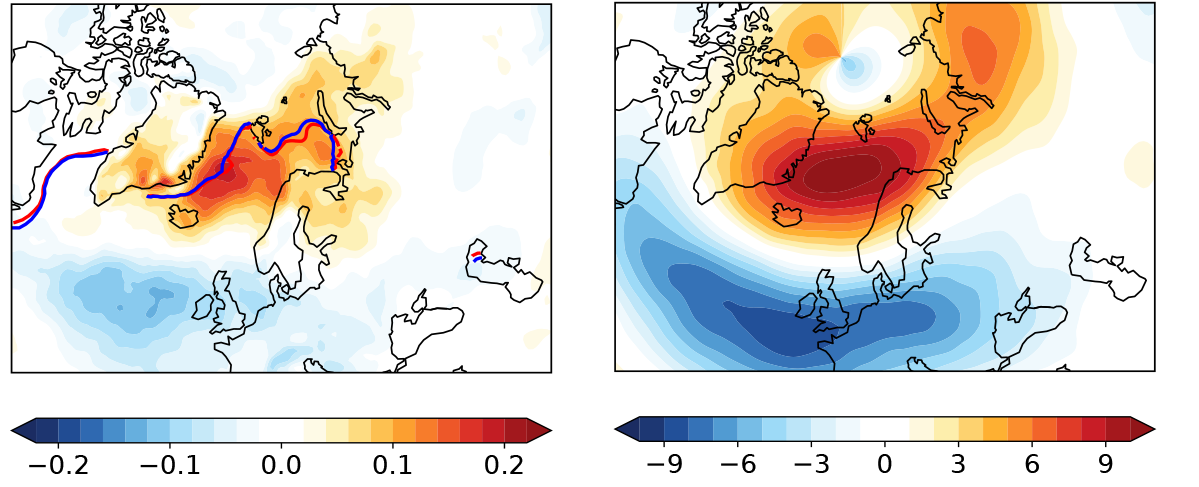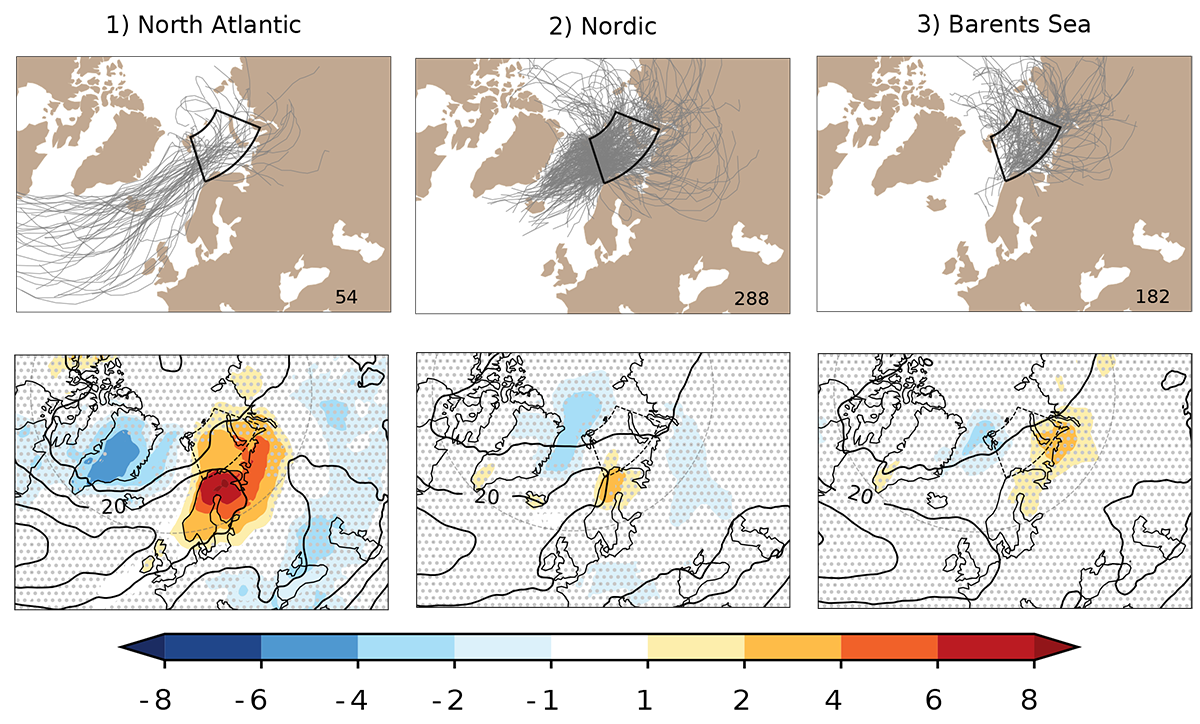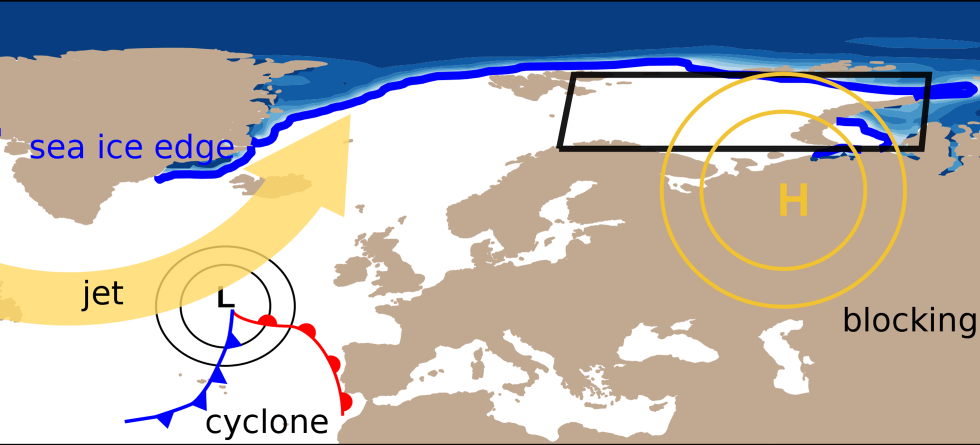Written by Erica Madonna, researcher at the Bjerknes Centre and the Geophysical Institute at the University of Bergen.
Extratropical cyclones (low-pressure systems) transport warm and moist air from the North Atlantic poleward. Some cyclones enter the Arctic and have strong impacts on the sea ice, including surface warming, sea ice drift and break-up, but they do not all take the same route and have the same effects.
The current study aims to better understand what controls the number of cyclones reaching the Barents Sea, as well as to characterize their climate impact upon reaching the Arctic circle.
There are two contrasting points of view explaining what controls the path of cyclones at high latitudes. On the one hand, some studies suggest that the atmospheric circulation, such as the orientation of the jet stream and the location of quasi-stationary high-pressure systems (referred to as “blocking”) control the cyclones’ path. In this perspective, one can imagine the jet stream as the highways where the cyclones travel, while the high-pressure systems constitute an obstacle on their way poleward.
On the other hand, other studies suggest that the location of the sea ice edge determines the region with a lot of “fuel” available for the growth of cyclones (termed as the Eady Growth Rate, EGR) and influences their propagation. In this perspective, the retreat of sea ice during the last decade in the Barents Sea coincides with a poleward shift of the “fuel filling stations” and thus fewer cyclones travel into the Barents Sea.

In this study, we want to understand if both perspectives can describe the observed cyclones variability in the Barents Sea. For this purpose, we select winter months with the highest (HC) and lowest (LC) number of cyclone tracks in the Barents Sea and produce composites of the EGR, the location of the sea ice edge and the large-scale flow (Figure 1, right panel).
The EGR is enhanced when many cyclones enter the Barents Sea (red shading). However, the enhanced EGR is not linked to the location of the sea ice edge, which is comparable in both composites. Rather, the changes in the EGR reflect changes in the upper level-flow (i.e. the jet stream).
In fact, during months with many cyclones, the upper-level jet is tilted and directed towards the Barents Sea, while during months with few cyclones the jet is zonal and displaced southwards. When the jet is displaced south, a high-pressure system (i.e. a blocking) often sits over the Barents Sea.
Thus, we conclude that the atmospheric circulation rather than the sea ice location controls the path of cyclones at high latitudes.
We further explore the climate impact of cyclones reaching the Barents Sea separating cyclone tracks based on their origin (Figure 2). Cyclones born in the North Atlantic south of 60°N (1) have a stronger warming effect than cyclones born in the Nordic Seas (2) or in the Barents Sea (3). Cyclones entering the Barents Sea from the North Atlantic also have a tilted jet stream, that favours the advection of warm air from the south.
We also show that the winter-to-winter variability in the number of Arctic cyclones in all categories is large and no robust trends are observed over the last forty years.

Reference
Madonna, E., Hes, G., Li, C., Michel, C., & Siew, P. Y. F. Control of Barents Sea wintertime cyclone variability by large‐scale atmospheric flow. Geophysical Research Letters, e2020GL090322.

